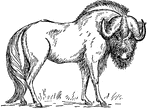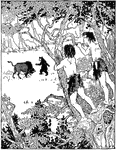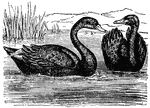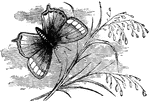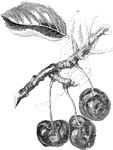
Circulation of Blood in a Frog's Foot
The circulation of the blood in the web of a frog's foot. A, an artery; B, capillaries crowded with…
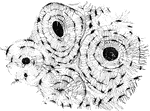
Microscopic Structure of Bone
The bone contains a multitude of small irregular spaces, approximately fusiform in shape, called lacunae,…

Vertical Section of a Vertebrate Brain
Longitudinal and vertical diagrammatic section of a vertebrate brain. Mb, midbrain: what lies in front…

Bread Mold Stages
"Rhizopus nigricans. A, Young sporangium, showing columella within; B, older sporangium, with the wall…
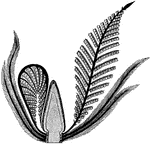
Cycadeoid
"Cycadeoidea dacotensis. Semi-diagrammatic sketch of a flower (bisporangiate cone), cut longitudinally;…
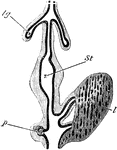
Digestive Tract of a Chick
Diagram of part of digestive tract of a chick (4th day). The black line represents hypoblast , the outer…
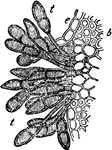
Winter Spores (teleutospores) on Wheat
These are very destructive parasites that attack valuable crops. Black lines and dots appear on the…

Small-Mouthed Black Bass
"1. Spiny portion of dorsal fin. 2. Soft portion of dorsal fin. 3. Caudal fin. 4. Anal fin. 5. Pectoral…
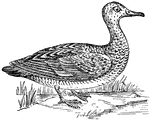
Gadwall
"Gadwall, a rather large fresh-water duck, common in the interior of the United States and breeding…
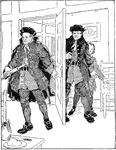
Treasure Island
The stranger, Black Dog hiding himself and Jim from Bill, the captain in Treasure Island by Robert Louis…

Great Black-backed Gull
"The Great Black-backed Gull is one of the most remarkable among sea-gulls. It is pure white, with a…

Pratincole
"The Pratincole lives in flocks on the banks of the Danube, the Volga, and on the Shores of the Black…
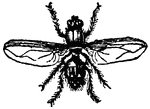
House-Fly (Musca Domestica)
"Ashy color, with the face black, the sides of the head yellow, and the forehead yellow with black stripes."

Portion of Rosetta Stone
"In the Nile valley there had been found a few ancient inscriptions, carved upon stone in unknown characters,…

Larva of Chelonia Caja
"The caterpillar of the Tiger-moth, or Woolly-bear, is covered with long, inclined hairs, which it uses…

Cocoon of Zygaena Filipendulae
"The caterpillar is yellow, spotted with black; its cocoon is boatshaped, with longitudinal furrows,…
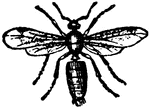
Male Ash Black Ant (Formica Nigra)
This ant belongs to the Mason-Ants which employ a mortar in raising their hillocks at the same time…

Female Ash Black Ant (Formica Nigra)
This ant belongs to the Mason-Ants which employ a mortar in raising their hillocks at the same time…
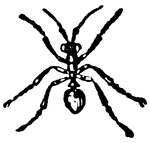
Worker Ash Black Ant (Formica Nigra)
This ant belongs to the Mason-Ants which employ a mortar in raising their hillocks at the same time…

Northern Bluefin Tuna
The Northern bluefin tuna (Thunnus thynnus) is a species of tuna native to the Atlantic Ocean, the Mediterranean…

Golden Ground Beetle (Carabus Auratus)
"Abounds in trees and gardens. When it is touched it disgorges a black and acrid saliva, and ejects…

Carabus Canaliculatus
"Abounds in trees and gardens. When it is touched it disgorges a black and acrid saliva, and ejects…

Campylocnemis Schroeteri
"An Australian insect, of a bright black, which attains to more than an inch and three quarters in length,…
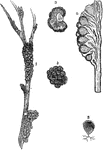
Black knot of the plum
Illustrations depicting a black knot of a plum. "1...represents the general appearance of the black-knot…

Black knot of the plum
"In answer to a communication of mine, Professor C. H. Peck, botanist, of Albany new York, informs me…

Stages of fungus growth
This illustration "represents its mycelium growth; 2,2 its budding cells, which terminate in fruit cells;…

Yonah Mountain
Yonah Mountain (more commonly referred to as Yonah) is located in the Chattahoochee National Forest…
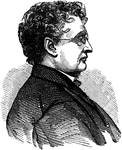
John A. Andrew
He served as the Governor of Massachusetts between 1861 and 1866 during the tumultuous American Civil…

Sweet Birch
"Betula lenta. 1. male flowers; 2. female flowers; 3. perpendicular section of a ripe fruit; 4. transverse…
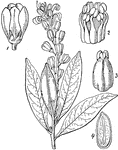
Buckwheat Tree
A Florida plant, the buckwheat tree: "Mylocaryum ligustrinum. 1. a flower; 2. stamens; 3. ovary; 4.…

Battle at Big Black River
The Battle of Big Black River Bridge, or Big Black, fought May 17, 1863, was part of the Vicksburg Campaign…

View on the Big Black River
The Battle of Big Black River Bridge, or Big Black, fought May 17, 1863, was part of the Vicksburg Campaign…
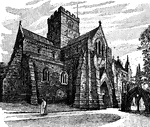
Carlisle Cathedral
It was begun during the reign of King Henry I by the first Bishop of Carlisle, the Englishman Athelwold…

Richard II
Richard II (6 January 1367 – ca. 14 February 1400) was King of England from 1377 until he was…
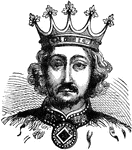
Richard II of England
Richard II (6 January 1367 – ca. 14 February 1400) was King of England from 1377 until he was…

Medal Given to Black Partridge
Black Partridge or Black Pheasant was a 19th century Peoria Lake Pottawatomie chieftain. He was later…
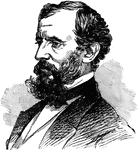
Vincent Colyer
Vincent Colyer (1825 - July 12, 1888) was a successful American artist noted for the images he created…
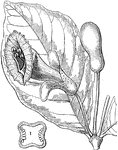
Black Calabash Tree
Native to Florida, Crescentia obovata or the Black Calabash tree is a flowering plant of the Bignoniaceae…
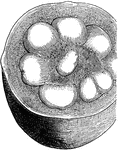
Black Calabash Fruit
A cross section of the fruit of the black calabash tree (Crescentia cucurbitina), native to Florida.
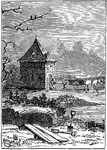
Plague Pits at Finsbury
A plague pit is the informal term used to refer to mass graves in which victims of the Black Death were…

Incandescent Lamp
The incandescent light bulb, incandescent lamp or incandescent light globe is a source of electric light…
Spinal Nerves
Diagrammatic representation of the roots and ganglia of the spinal nerves, showing their position in…

Brown Pelican and Sea Gull
An illustration of a brown pelican with a fish in it's mouth and a sea gull resting on his back. The…

Edmund Pendleton Gaines
Edmund Pendleton Gaines (March 20, 1777 - June 6, 1849) was a United States army officer who served…

Baloo Singing to Wolves
From Kipling's The Jungle Book, Baloo singing the Law of the Jungle to a pack of wolves.
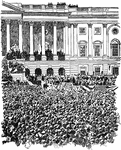
Inauguration of William McKinley
The inauguration of President William McKinley led by the Black Horse Cavalry down Pennsylvania Avenue.

Maryland Black Snakeroot
"Flowering plant of sanicle (Sanicula marilandica). (a), a male flower; (b), the fruit." -Whitney, 1911

Weevil
A weevil is any beetle from the Curculionoidea superfamily. They are usually small, less than 6 mm (¼…

Zachary Taylor's Residence at Baton Rouge
Zachary Taylor (November 24, 1784 – July 9, 1850) was an American military leader and the twelfth…
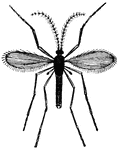
Hessian Fly
The hessian fly or barley midge, Mayetiola destructor, is a species of fly that is a significant pest…

